S
































 BY AMY KYLLO | STAFF WRITER
BY AMY KYLLO | STAFF WRITER

CHATFIELD — When a customer bites into one of the Brens’ dill pickles from the Chatfield farmers market, they bite in with a crunch.




“The first thing you notice is the crunch of our pickles and then the full flavor of dill with a hint of garlic,” Vanessa Bren said. “Everybody’s obsessed with them.”
Vanessa alongside her husband Dustin and their children Alaina, Beckett and Kate are easily most famous at the Chatfield farmers market for their dill pickles. The family makes hundreds of quarts of pickles every year, which they sell at their booth along with other products under the name The Backyard Brens.
During cucumber season, Vanessa, Dustin and 11-yearold Alaina can be found in the kitchen every weekend and two days during the work week making pickles. At the stove, Vanessa stirs together the brine, complete with a secret ingredient they use to get the pickles’ distinctive crunch. Dustin peels garlic at the table while Alaina cuts cucumbers for slicers, ster-
ilizes the lids and packs the jars with cucumbers, dill and garlic. Pervasive over all is the smell of vinegar.
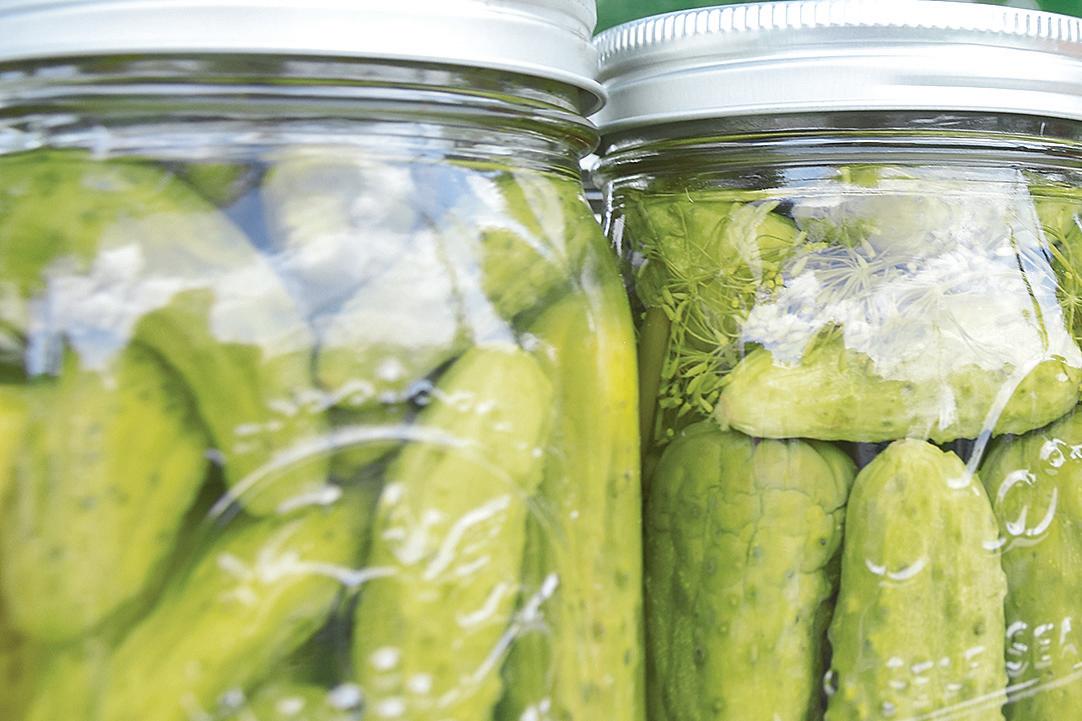
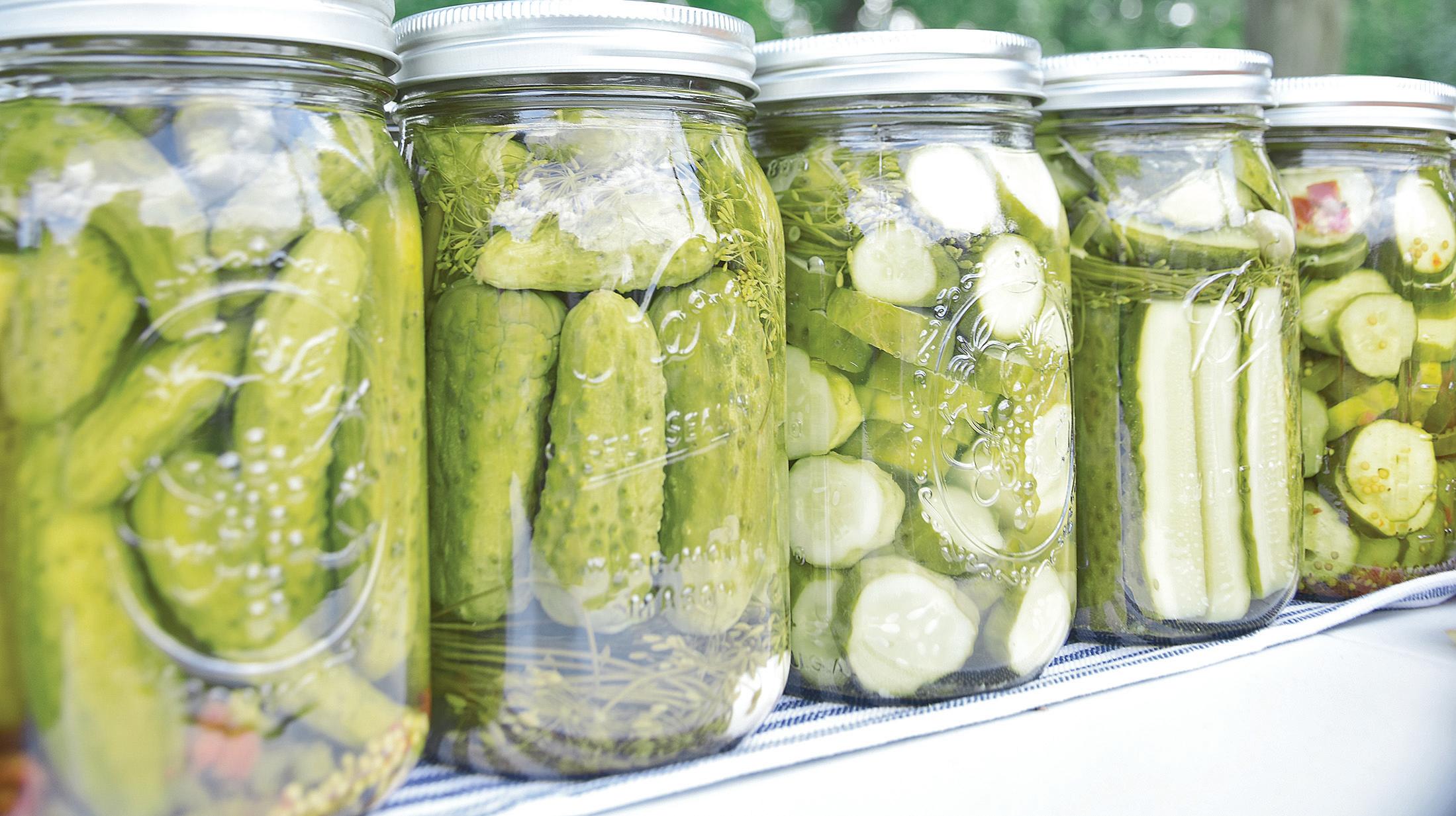
“It smells the best,” Alaina said. “I love vinegar.” This year, they have almost reached their goal of making 400 quarts of pickles. Last year, they made 364 quarts. A pickle-making session produces somewhere between 25 and 95 quarts.

The Brens grow most of the cucumbers in their garden as well as the garlic and dill. Additional cucumbers are sourced from local farms as well as their extended family.
The Brens make multiple pickle varieties including classic dill, bread and butter, bread and butter zesty, hot and spicy, and old fashioned lime. They also make pickled asparagus which they haven’t sold publicly but plan to do so in the future.
Alaina said she remembers a time when they forgot to add their secret ingredient to the
pickles.

“They were just like store ones,” she said. “They were not good.”
Their recipe is a family one. The Brens brought their pickles to the farmers market for the first time three years ago and, when they found out how popular they were, decided to keep on.
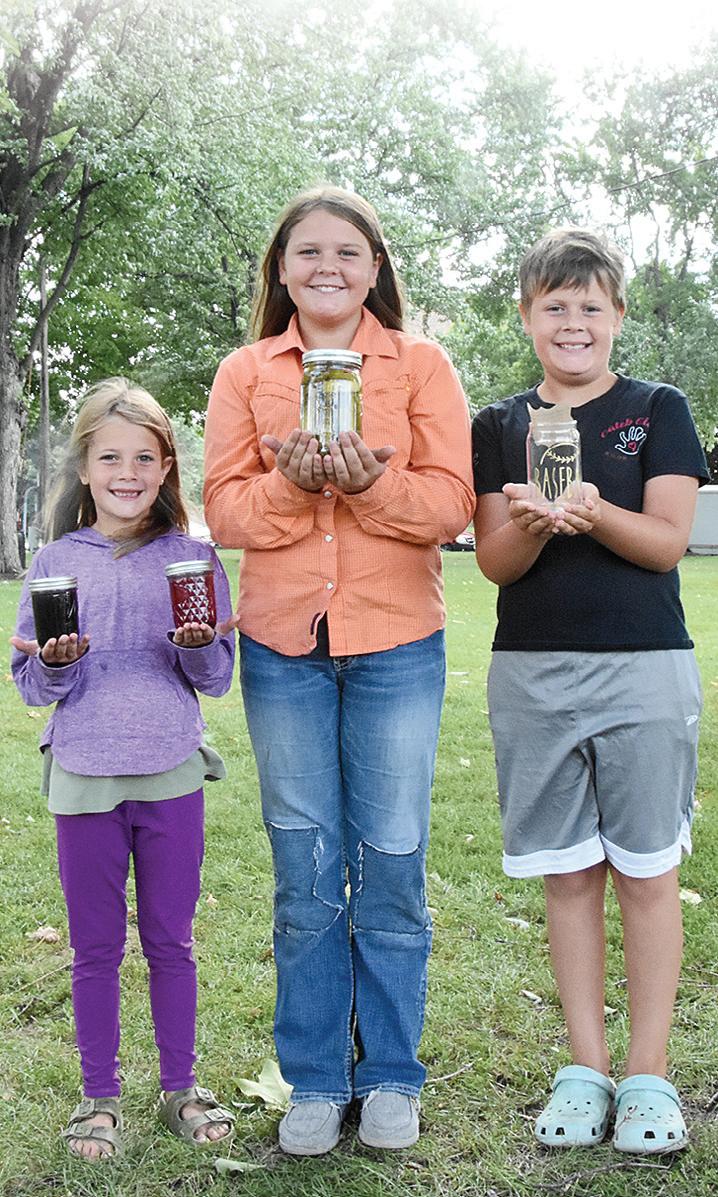
The Brens also bring fresh produce and salsa to sell to customers. This year, Alaina and Vanessa were joined at the market by Alaina’s two younger siblings, Beckett and Kate.
Each sibling has their own table at the market. Alaina has the pickles, produce and salsa; Kate has jam; and Beckett has crafts, including individually decorated glassware, towels and plant pots. A bit of rivalry keeps each of their wares separated.
Brens page 2
The Bren children sell pickles, other wares in ChatfieldPHOTO BY AMY KYLLO Light gleams off jars of pickles Aug. 17 at the farmers market in Chatfield. This year the Bren family has almost reached their goal of making 400 quarts of pickles. PHOTO BY AMY KYLLO Kate (from left), Alaina and Beckett Bren hold their wares Aug. 17 at the farmers market in Chatfield. Each sibling has their own table; Alaina has the pickles, produce and salsa; Kate has jam and Beckett has crafts including decorated glassware, towels and plant pots.












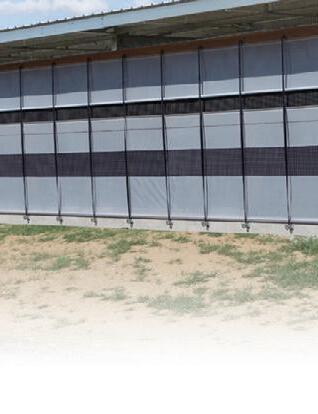




























































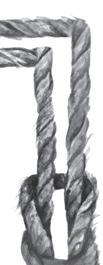










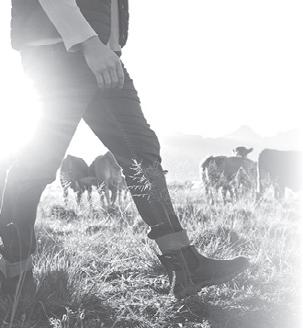


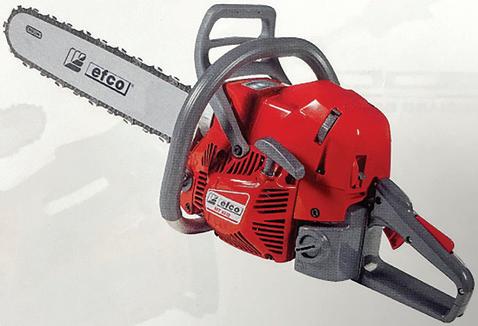

Brens from page 2

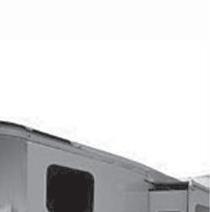






Beckett would like to save to buy another dog. Kate is looking to save her money to do shopping at a flea market or craft and vendor sale.


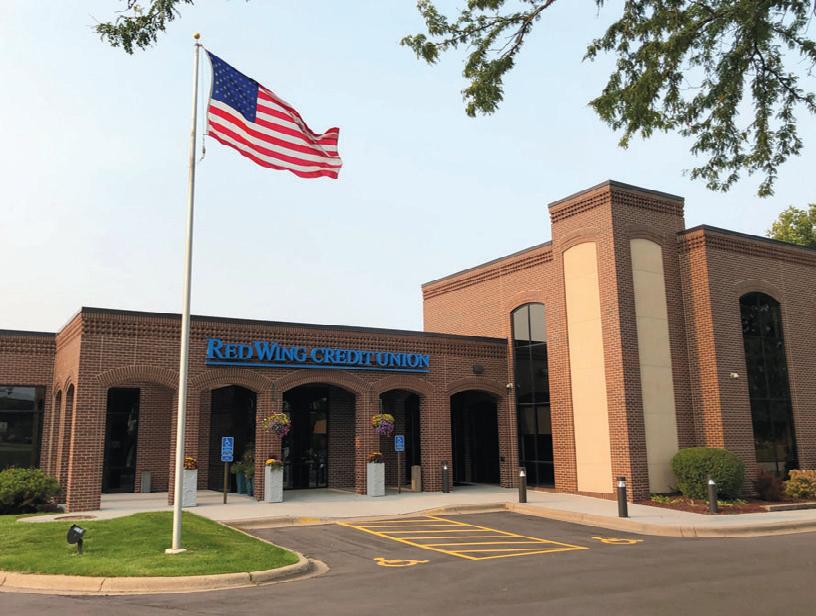
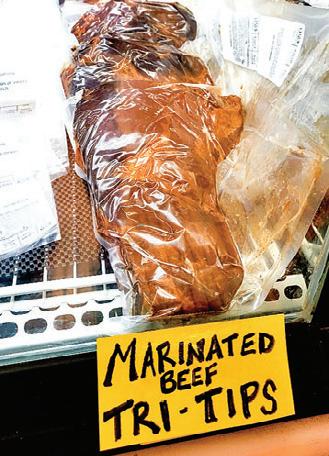
Vanessa said Alaina has been learning through her experiences.
“You’ve learned responsibility,” she said. “You have to do all your






















own stuff.”



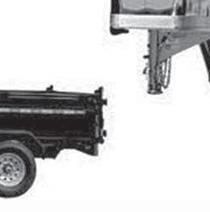








Alaina agreed. She said she has learned math from making change and how to interact with customers.





Looking to next year, Alaina would like to expand the garden, and Becket would like to grow garden produce to sell.
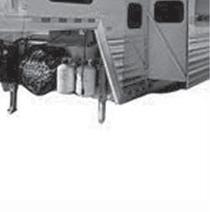

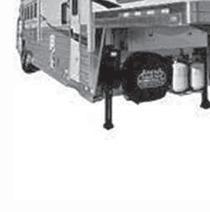


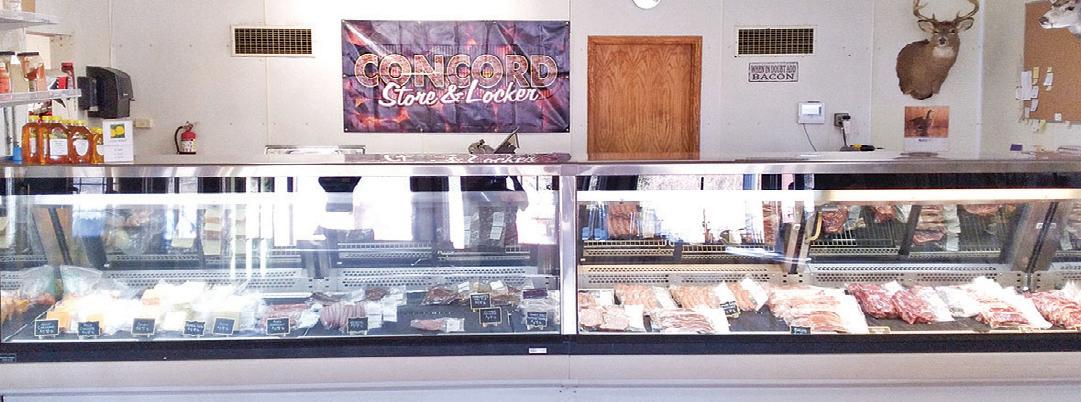
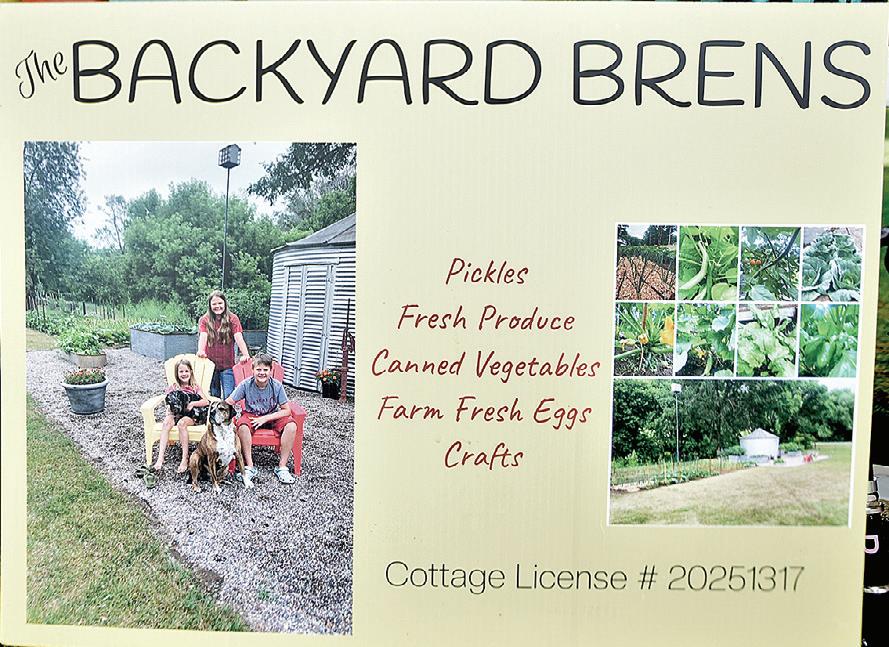
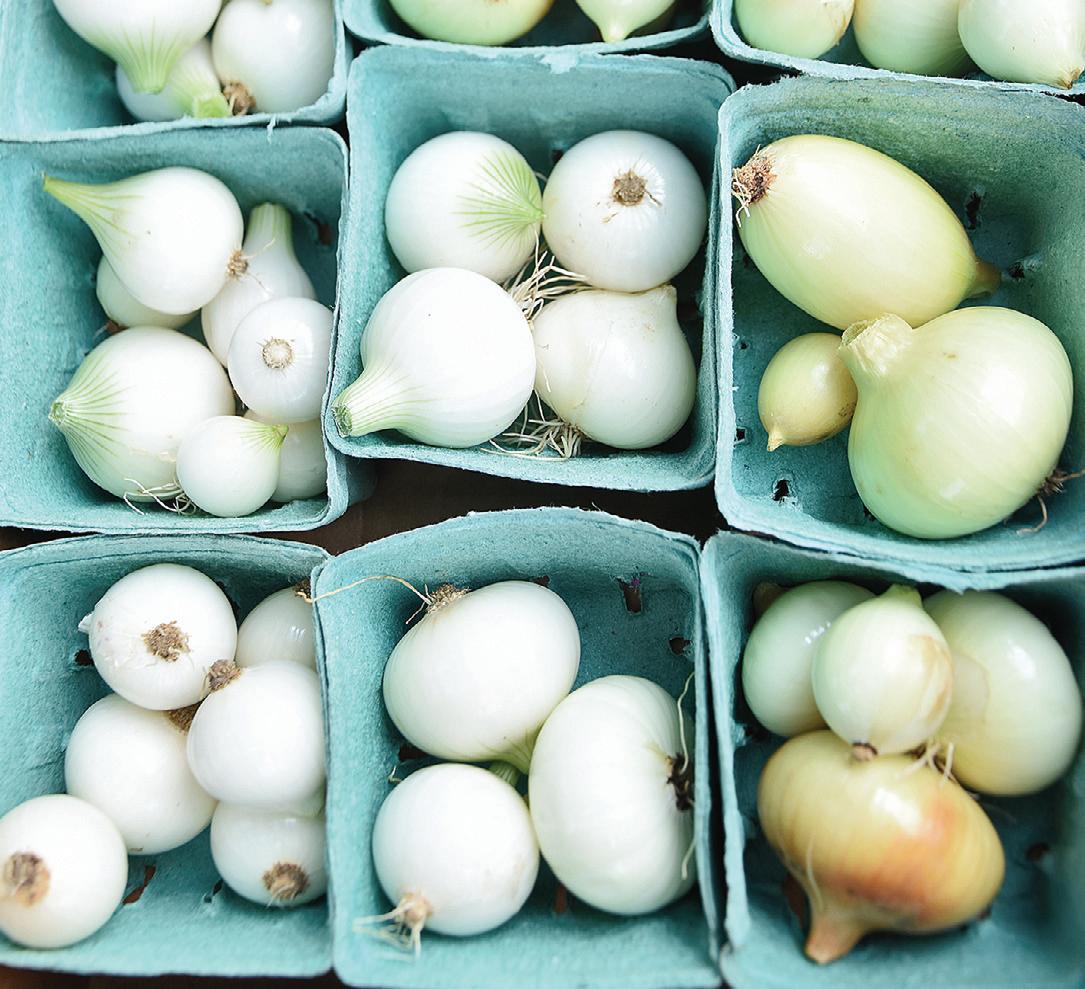

LIVE/ONLINE · Saturday, Sept. 9th, 2023
PERSONAL VEHICLES, TRACTORS, FARM IMPLEMENTS, SHOP TOOLS & MISC., HOUSEHOLD MISC.







Location: 4819 Quartz Ave, Meyer, IA 50455 (address comes up in McIntire)

Wagons
FARM TRACTORS & MACHINERY: 2021 Massey Ferguson 2860M Tractor, MFD, Massey Ferguson FL2814 Loader w/Front Aux. Hyd., w/Bucket, Cab, Heat, Air, 1 Hyd., 3pt, PTO, 203 Hours, Hydro Trans., (5) Dump Wagons w/Hyd. Hoist & JD Gears, Loaded w/Cut (hardwood)
Firewood, IH Dump Wagon w/Hyd. Hoist, Metal Sides & Gear, Loaded w/Firewood, Various JD, Massey & AC Weights, Farm King 740 Snowblower, Hyd. Sprout (like new), Minneapolis Moline Grain Drill, 10ft w/Grass Seeder, Double Disc
Openers, 6” Spacings, John Deere 7000 2 Row Planter, 3pt, Liquid Fert., Corn & Bean Units, Country Pro Cat. 2 Quick
Hitch, Allis Chalmers 4 Shank Chisel Plow w/Snap Coupler, 3pt Landscape Rake, 3pt Country Line Box Blade, Utility
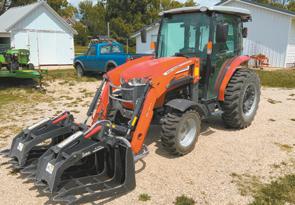
Trailer w/JD Signage , Small 3pt Digger, Set of Pallet Forks w/Quick Tach, Wallenstein 25-Ton Hyd. Log Splitter w/Quick
Tach Mounts, Taylor-Way E Series Rototiller, 3pt, PTO, 72”, Horse Drawn Cultivator, (2) 4ft Pull-Type Cultipackers, 7ft

Pull-Type Cultipacker, Hay Rack w/JD Gear, 3pt Rotary Hoe, 7ft, Custom Made Hyd. Dump Trailer, Loaded w/Firewood,
Pull-Type 10ft Field Cultivator, John Deere RWA 12ft Disc, 3-Bottom Pull-Type Plow on Steel, Allis Chalmers 3-Bottom
Plow w/Coupler, Allis Chalmers 2-Bottom Plow, 3pt Mounts, John Deere 1 Shank Pull-Type Ripper, United Farm Tools
Pull-Type Chopper, 6ft, PTO
ANTIQUE TRACTORS & MOTORS: Allis Chalmers, Gas, NF, 1 hyd., 13.6x26 Tires, Spin-On Hubs, 3pt, w/Snap Coupler, Cockshutt 80, Gas, on Steel, John Deere LI, Gas, WF, Belt Pulley, Sickle Mower, Restored, Massey Harris Pony, Gas, WF, w/ Bottom Plow, Restored, Minneapolis Moline BF, Gas, NF, IXB3-SL, 6A-Loway 7hp Hit & Miss Power Unit on Steel Gear w/
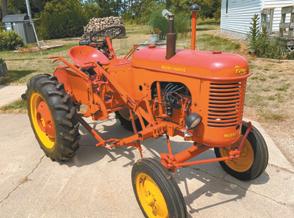
Belt Driven Saw, John Deere Hit & Miss Unit, 3hp Motor on Steel Cart, International Hit & Miss Unit 1 1/2hp-2 1/2hp
LAWN & GARDEN: Husqvarna Walk Behind Tiller, Hustler Raptor Zero Turn Lawn Mower, Small Pull-Type Side Rake, Ultra-Tow Aluminum Bi-Fold Ramps, Large Corn Hand Sheller, Antique Band Saw, Power Pro Walk-Behind Snowblower, Tecumseh Push Lawnmower, Push-Type Lawn Seeder, John Deere 48” Lawn Roller, 48” Lawn Aerator, 8ftx10ft Log

Cabin Utility Shed w/Metal Roof, Towne & Country 15hp Lawn Tractor, Old Chevy Pull-Type Lawn Cart, North Star
30-ton Log Splitter w/Kohler Gas Motor & Pull-Type Cart, Sear & Roebuck

One of my first memories fishing was up north on a family vacation. We stayed at one of the state parks near Lake Mille Lacs and were fishing in a river nearby. I had my own puddle on the edge that I was fishing in. There I worked to lure in the lone fish clearly visible before me.
Like the fishing expert I was, eventually I brought it in. The tiny fish was a bullhead, and I was surprised by the barbels on its face. My excited yell to my family is one I will not soon live down.
“I caught a fish, and it has whiskers!” I said.

I remember my mom would tell and retell that story until I was thoroughly sick of hearing it. Apparently coming from a little blonde 5-year-old with a high shrill voice, the whole scene was rather cute.
We did not do tons of fishing growing up, but when we did, it was something we did in the most 21st century amateurish kind of way. We were, of course, beyond a stick with line and safety pin, but the tackle we did have we only sort of knew how to use. I remember having a fishing pole that did not cast so I had to throw my line out; however, this was the pole that caught the bullhead, so it shouldn’t be thrown too much shade.
Since fishing was pretty homegrown, we only used purchased bait on vacation. Most often, we satisfied ourselves with worms. I got to help turn up buckets and containers to check underneath or dig in random places. Next to the barn in a corner near the high moisture corn silo was the worm capital on our farm. It must have had the perfect amount of moisture in the soil coupled with plenty of spilled corn to digest and break down, because that spot made the magic when it came to
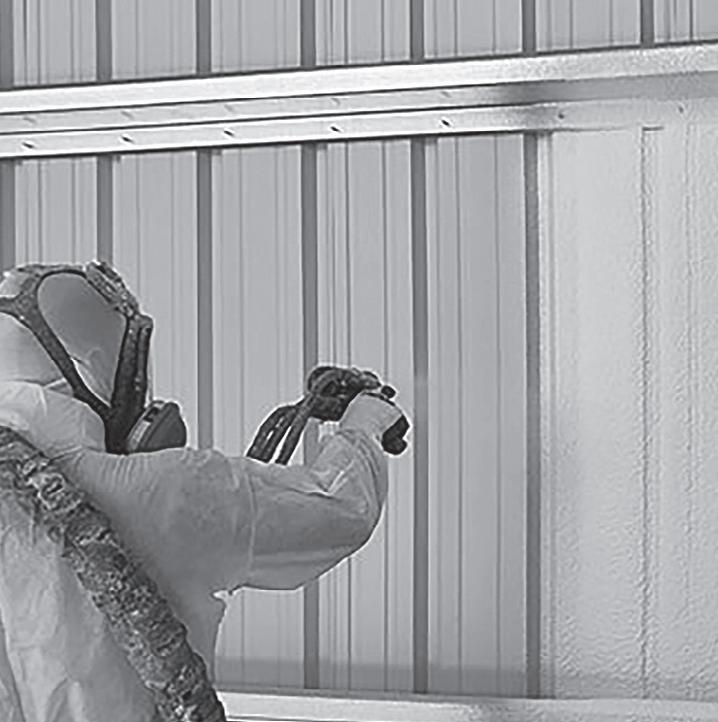
130 State Hwy. 16 Dexter, MN 55926 (507) 584-0133



AUCTIONEERS: Andrew Hamilton, Bill Hilton; Sales Associates: Jeff Thorsen, Bob Grass; CLERK: Hamilton Auction Co. FOR COMPLETE LISTING: WWW.HAMILTONAUCTIONCOMPANY.COM

worms.

When I was younger, I remember “helping” with filleting the fish. None of us were very good, and I was no exception. I still remember the paradox of the fact that I was always squeamish about filleting a live fish, but somehow was OK with hurling the fish on a cement floor until it died so I could fillet it.

My family’s farm has a small river flowing through it, so fishing was fairly accessible. There is a photo of my sisters and I sitting on the front steps holding out a catch of fish. We all have big grins, frizzy hair from the humidity and are quite dirty. My older sister wanted to make that photo our Christmas card that year, but the rest of us were too self-conscious of how disheveled we looked. Instead, we argued to have a typical photo of us all in dresses taken at a wedding or somewhere like that which accurately portrayed about 0.1% of our life, just like we sent out every year.
I was so lucky to grow up with a river, although I never fully utilized its fun. Besides fishing, there was splashing about in the river or, every once in a while, taking out our kayaks. Smaller adventures included hunting for shells before the grass grew up in the spring. Today, I have a nice collection of shells I don’t know what to do with.
Now, when I occasionally get out fishing every two or three years, not a lot has changed skill wise. I can catch a 4-inch fish, pretend I’m giving it a kiss for the photo and feel quite reluctant about throwing it back. This reluctance is in spite of the fact that I realize I do not really know how to fillet, and even if I did, the morsel it would make would not be worth much, just like my fishing skills.






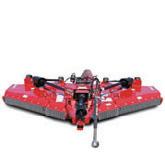







RIDGEWAY — The rumbling sound of traffic wafts through the windows of Ridgeway Community School from Interstate 90. A chorus of crickets, the hum of a tractor and wind rustling the trees completes the ambiance of this rural school near the village of Ridgeway in southern Winona County.
Soon, students and teachers will add to the character of the building when they return for the 2023-24 school year Sept. 5.
The school, which has been operating as a charter school since the 200102 school year, focuses on community involvement, multi-age education and wellness.
Jodi Dansingburg is the school coordinator and has been with the school since its inception as a charter school.

“I enjoy getting to know the kids and seeing them grow in those opportunities they have for developing leadership skills,” Dansingburg said.
The physical landscape of the school coupled with its three-tiered focus benefits students and staff.
Sitting on 6 acres of land, Ridgeway Community School includes an athletic field, playground, school garden, orchard and native prairie area. The farm borders a dairy farm, and the owners allow the school to utilize their 6 miles of wooded trails.

“We can literally walk out the back door of the school and go hiking,” Dansingburg said. “We have a lot of advantages with not only a nice building but great outdoor facilities.”


Outdoor pavilions are used for classrooms, and traditional sports mesh with offerings such as garden club, hiking club, cross-country skiing and snowshoeing. The school is also a member of the National Archery in the Schools Program and offers a wide range of afterschool programs.
Fourth-grade student, Delaney Belter, shows off a bird she carved out of basswood in January during an afterschool wood carving club at Ridgeway Community School near the village of Ridgeway. The club was led by community woodcarving artist, John Carlson.
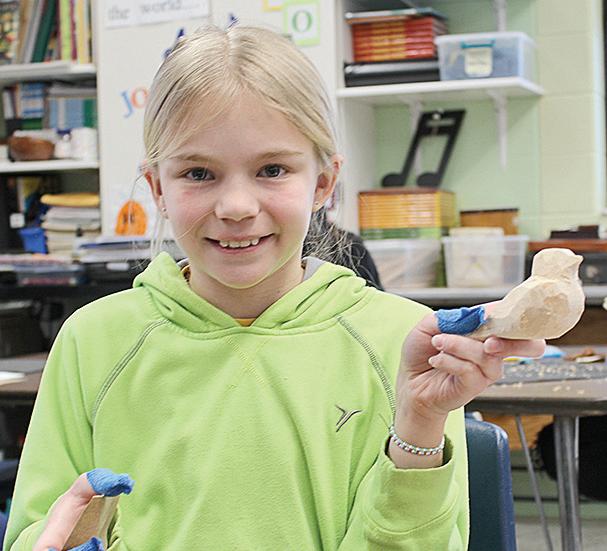
“We try to expose students to a lot of opportunities for physical activity,” Dansingburg said. “It’s nice to be of service to our community. The kids can get exposure to some of these sports or hobbies and see what different activities are like. If they are interested in pursuing
Preschool, second and third grade students learn an American folk dance in May at Ridgeway Community School near the village of Ridgeway. The event was possible because of a residency with American folk dance artist, Sue Hulsether.

them, when they go to middle school, they at least get some experience and opportunities here.”
A charter school operates as a free, public school and follows all state education requirements, including state-man-dated testing. However, one difference between charter public schools and district public schools is that charter schools are not required to have a licensed principal.


“At our school, we have a flat administrative leadership model,” Dansingburg said.






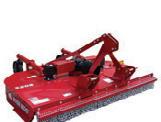


The school board is comprised of parents, teachers and community members, and two classroom teachers serve as the school’s lead teachers, doing educational administrative work.







Ridgeway page 6

Six classroom teachers will instruct 94 kindergarten through fifth-grade students this year, each class with a maximum of 18 students. The school also has a preschool program. In addition to the classroom teachers, the school employs a diverse mix of additional instructors, in areas including music, physical education, art and special education.
The kindergarten and first grade classrooms are standalone. Two multi-age classrooms are used for second and third grade as well as two for fourth and fifth grade.
When the school transitioned to a charter school, the building had four classrooms in it. At the time, two grades were housed in one classroom because of space restrictions.
“They were running it more as two separate grades in one classroom,” Dansingburg said.

Now, multi-age instruction has transformed to be a benefit.
The only subject children have age-level instruction for is math; otherwise, subjects are taught in multi-age groupings.
“There’s a differentiation happening, but it’s not necessarily based on what grade they’re in,” Dansingburg said. “It’s what level they’re at with their ability.”

One second-third grade teacher might teach social studies while the other teaches science. During the course of a week, students will move back and forth between
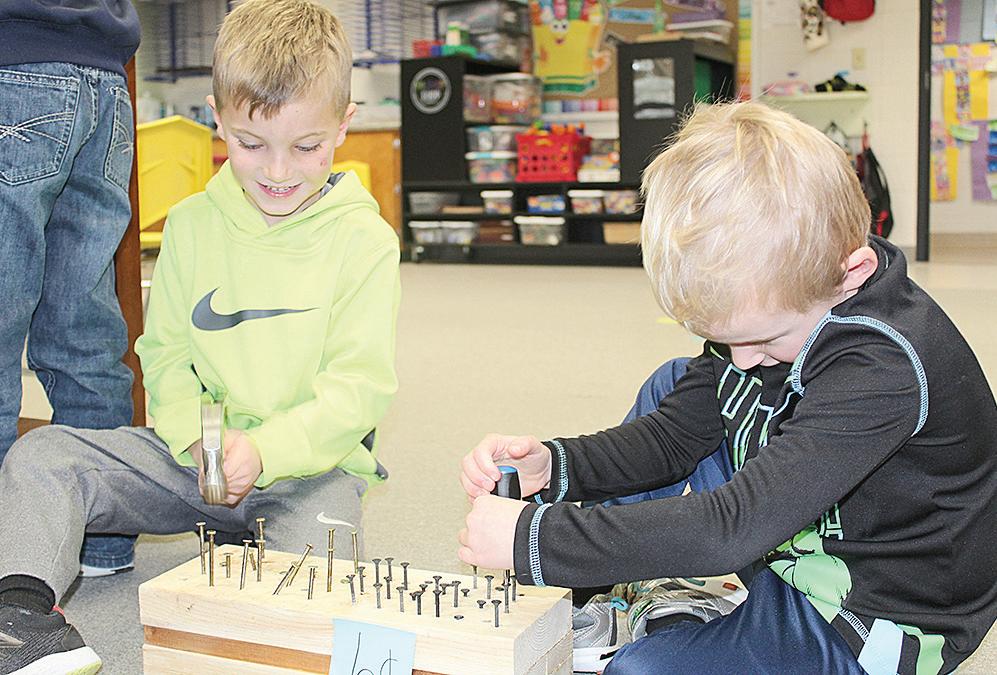
classrooms. The arrangement has allowed teachers to use each other as a peer professional in honing their instruction or managing their classrooms.
“They can say, ‘I’m having this struggle with this student. What are they like in your classroom?’”
Dansingburg said. “They can work together to meet their needs. It’s really helped us with teacher longevity.”
Dansingburg said the multi-age classrooms have further helped balance classroom dynamics and created a strong classroom environment.
A monthly multi-age homeroom is also used
















Cresco 563-547-3121

for community building. These homeroom sessions last about an hour, and siblings are placed in the same homeroom group.
“It’s a nice opportunity for younger kids and older kids to get to know each other,” Dansingburg said.
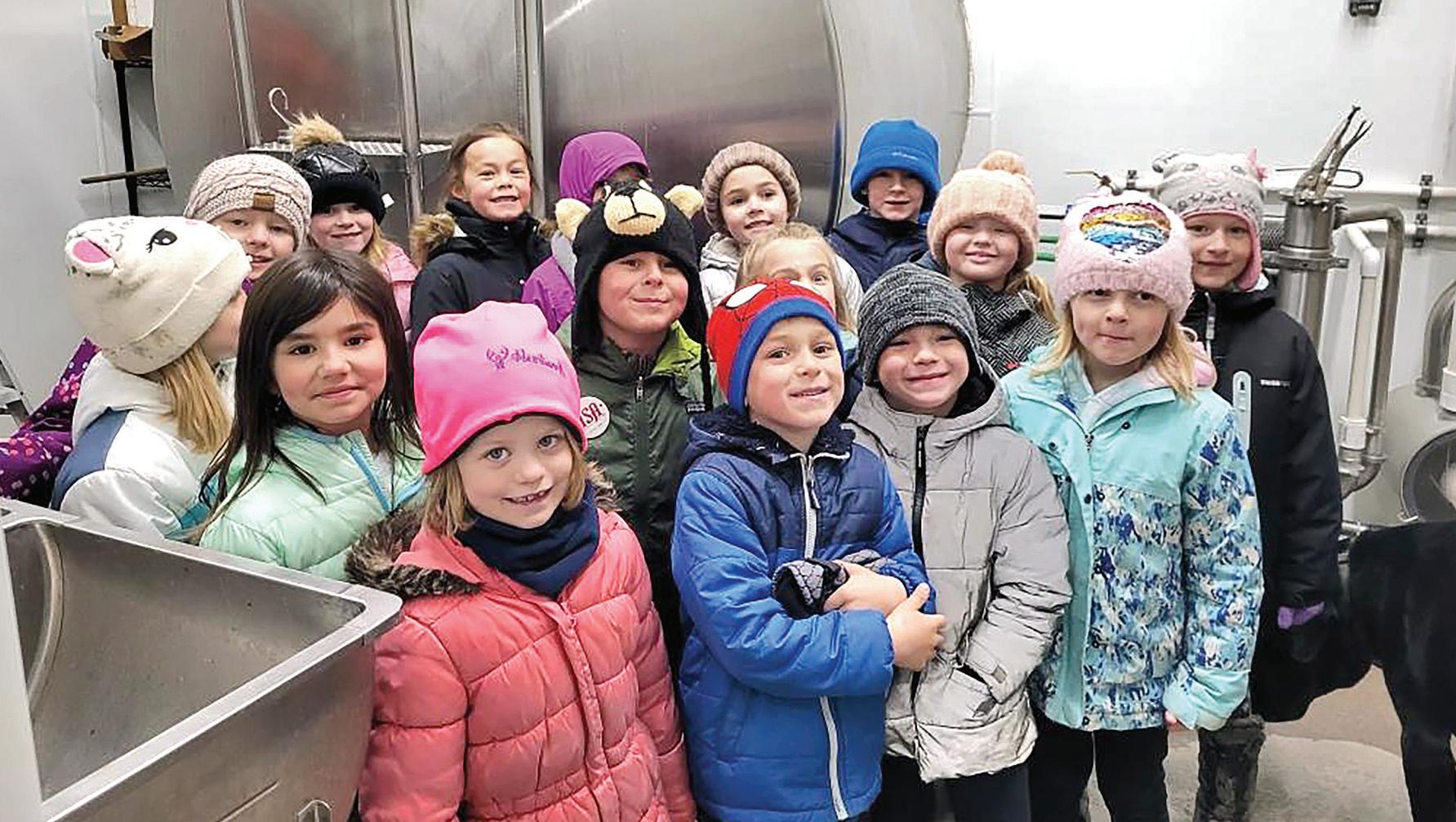
“That has been a great way to build the community so that most of the staff and all the kids know all the other kids’ names and it’s a big school community rather than individual classrooms where kids are pretty isolated with their teacher all day long.”
Last year, the homeroom focused on the school’s core values of responsibility, respect, being safe and being prepared. Each month, a different attribute was focused on, and character development activities were carried out.
The school hosts a number of community events throughout the year, dedicating time and resources to one of their key attributes. Local FFA chapter members and 4-H club members often volunteer, exposing children to both organizations should

they choose to further their involvement in those groups as they age.
Dansingburg said charter schools face a particular challenge in that they do not receive as much per pupil funding as a district school. As such, teachers do not earn what a typical public school
teacher would. However, Dansingburg said teacher turnover remains low.
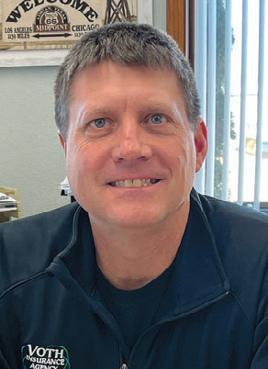
“We’re lucky to have a super dedicated group of teachers who really have more autonomy in developing their curriculum and implementation,” Dansingburg said. “They work as a team to research what they
think is going to be a best fit.”
Dansingburg said the school leadership is grateful to have had support from community members and business leaders.
Ridgeway page 7





from page 6
Financial support as well as volunteer labor and aid allowed the school to conduct two additions to make the current six-classroom layout. The school also has a special education room, a library, an art and music classroom and a preschool classroom.
Those projects were possible due to over $1 million in donations collected through fundraising events and a campaign.




“We wouldn’t have been able to pull off what we have if we hadn’t had so much support from parents and community members,” Dansingburg said.

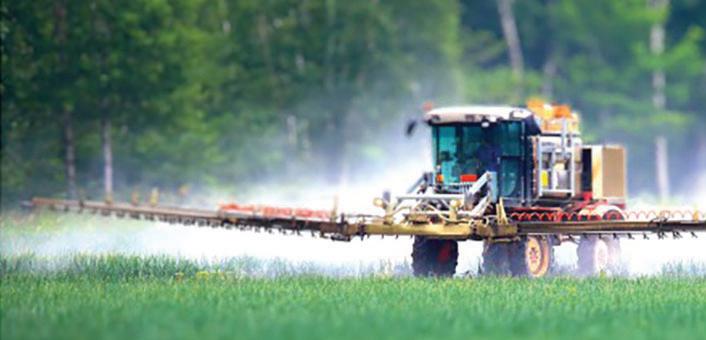
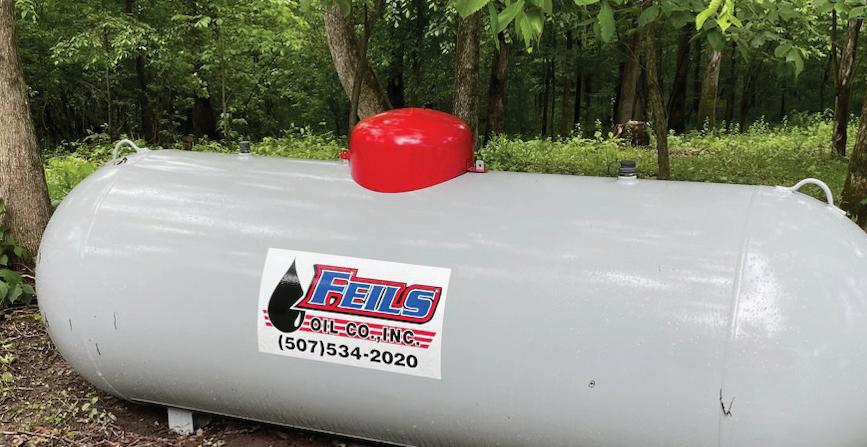


That sense of community and bettering the local area is forefront at Ridgeway Community School.
“We reach out to the area organizations, churches and fire departments to support each other and work together on things in a small community,” Dansingburg said. “There are not a lot of us so we try to work together. We’re lucky to have so much support.”
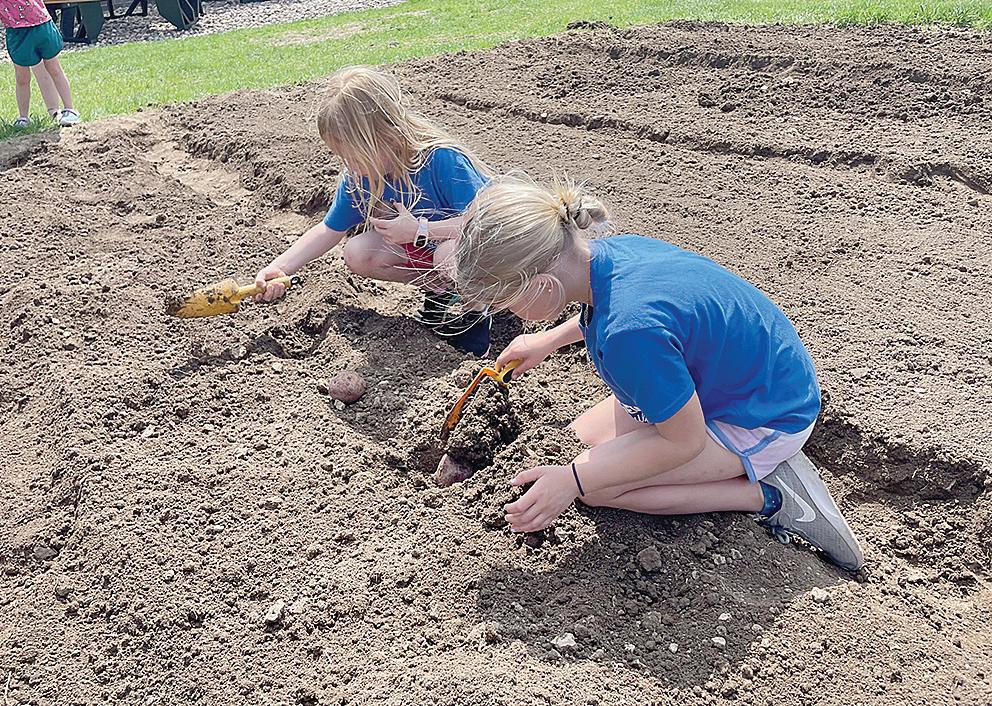


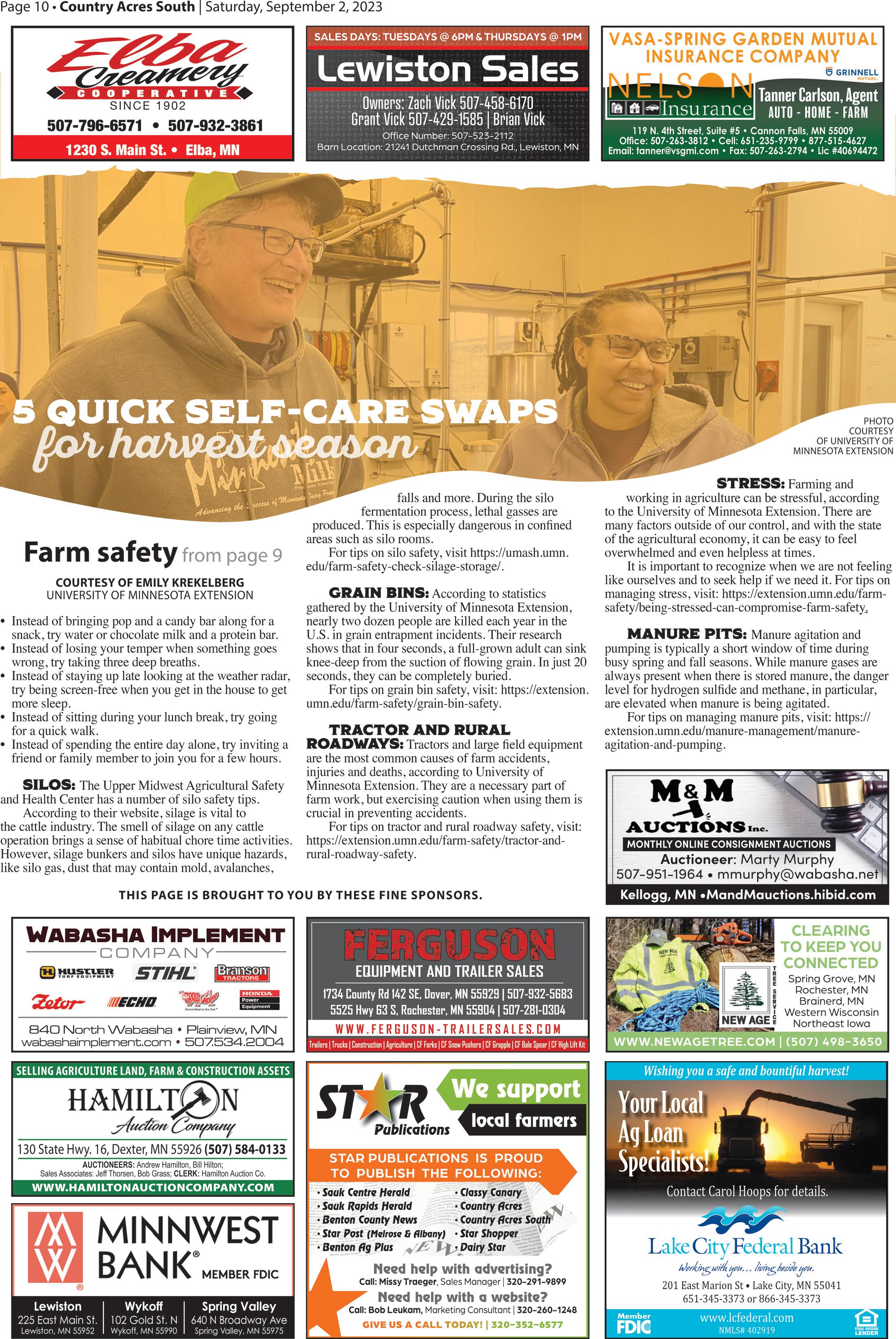
 BY SARAH COLBURN | STAFF WRITER
BY SARAH COLBURN | STAFF WRITER

As farms across the Midwest leave the marketplace, the University of Minnesota Extension is doing something to encourage new farmers to the field.
“Small farms are still really important in food production and economics of our rural areas,” said Taylor Herbert, an extension educator specializing in crops.
While Herbert, and the team she works with, serve Wright, McLeod and Meeker counties, they have joined together to host a Small Farm Start-Up School that is open to all Minnesotans. The six-week class will focus on how to use land to produce everything from fruits and vegetables and row crops to livestock and agritourism business.
“Some participants for this year are interested in return on investment,” Herbert said. “Others are actually making (a goal to have) half of the family income being provided by the farm.”
Registration for the class is open, and extension educators are determining how often to offer the class and which locations across the state have a need.
This fall’s class will be offered in Dassel.

“Some of our small farms might have different enterprises that can diversify the landscape,” Herbert said. “These are the kind of innovative enterprises that can provide different economic opportunities in our areas.”
Some of the participants are or have been interested in opening orchards, growing barley to provide to local breweries, creating berry farms or cut flower
COURTESY OF UNIVERSITY OF MINNESOTA EXTENSION
Farmer Clark Machtemes of East Bay Sugarbush Maple Syrup talks to members of the 2022 Small Farm Start-Up School as part of the farm tour visit days for the class. Class members heard from farmers about their day-today lives as well as challenges and triumphs.
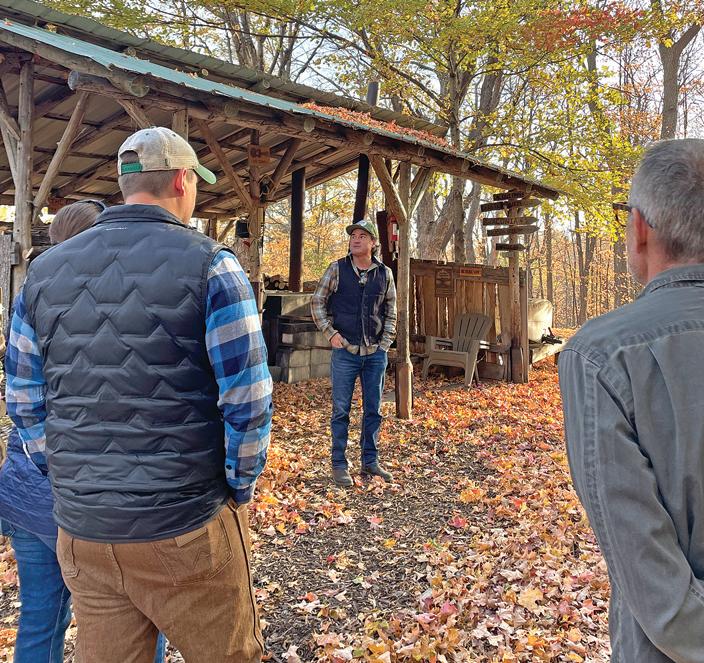
farms, developing agritourism business plans, or having livestock for people to enjoy. Some, she said, are interested in growing alternative crops like Kernza.

“There is a bit of a push for local foods; small farms are what consumers are interested in right now,”
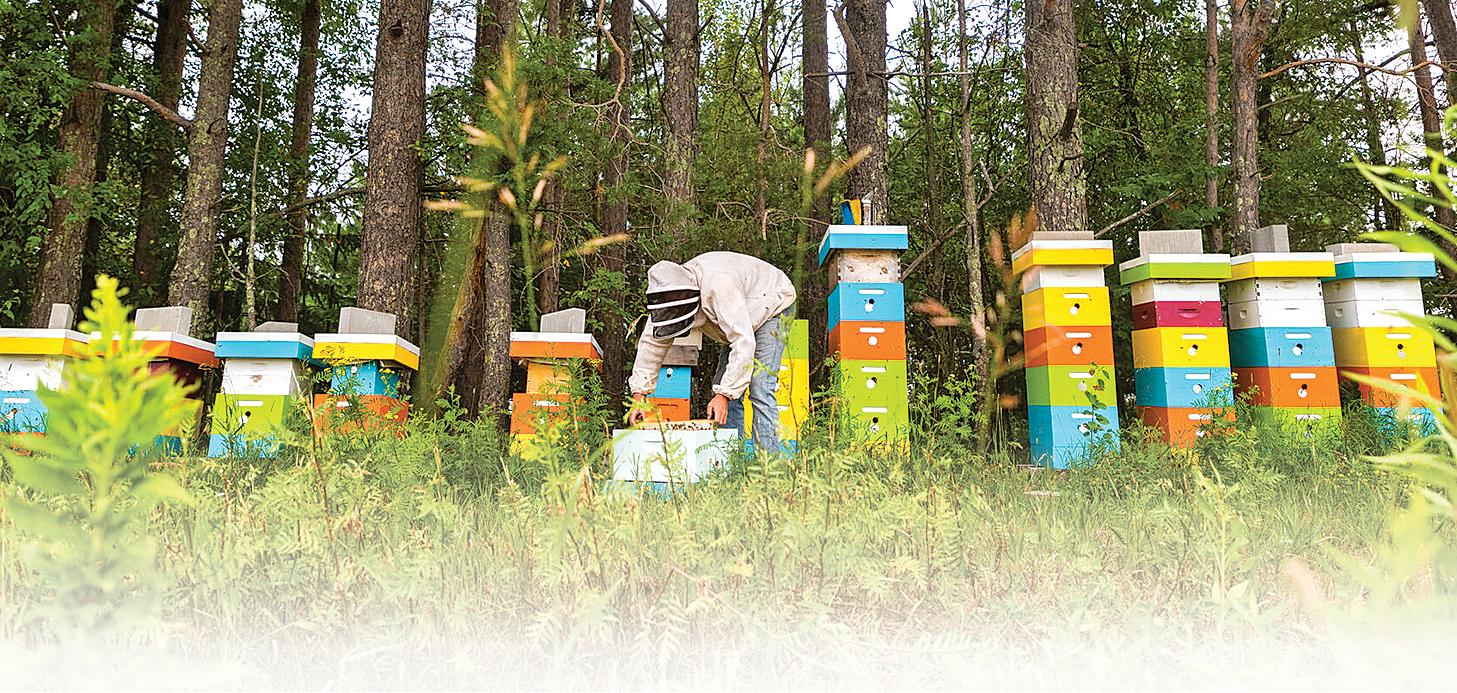
COPYRIGHT UNIVERSITY OF MINNESOTA EXTENSION

(Photo 3) Students attending the University of Minnesota’s Small Farm Start-Up School are often interested in alternative crops such as cut flowers. These crops can provide new economic opportunities in a region.
SCOTT STREBLE, COPYRIGHT UNIVERSITY OF MINNESOTA EXTENSION (Photo 4) Apples are ready for picking beginning in late summer across Minnesota. Orchards are one of the agricultural ventures many students in the Small Farm Start-Up School are interested in creating.
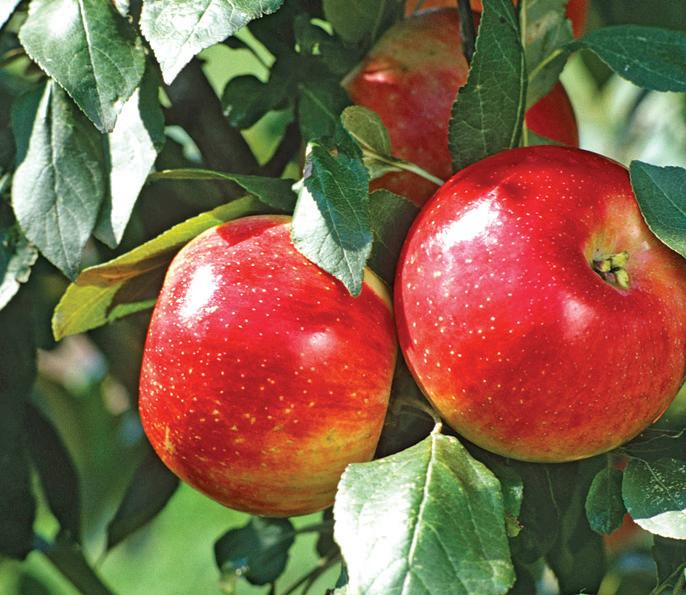
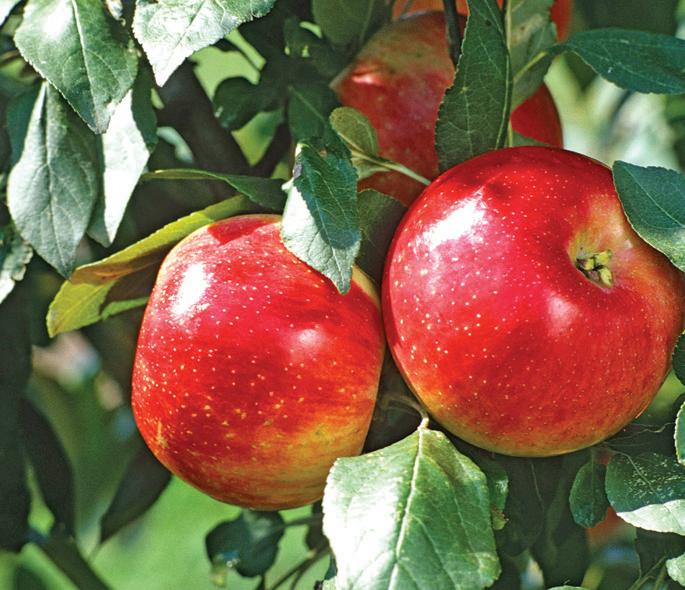
COPYRIGHT UNIVERSITY OF MINNESOTA EXTENSION (Photo 5) Maple syrup is one of the products farmers attending the Small Farm Start-Up School could harvest. Alternative crops and products are key to providing diversification on a farm.

Herbert said. “There are lots of opportunities.”
The class covers everything from goal setting and county agricultural resources to soil management, crop production, food regulations, livestock production and biosecurity.
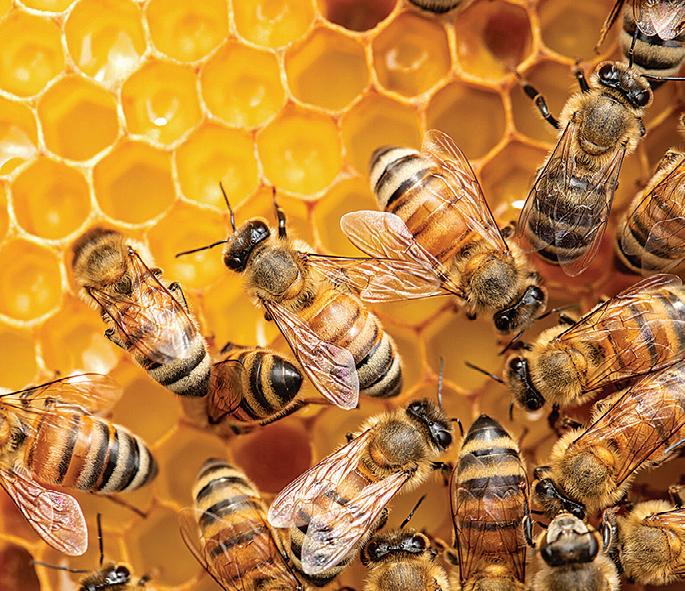

Herbert said they work to tailor the course to the interests of the participants. Attendees each put together their own agriculture plan that is in-depth enough to bring to an advisor, consultant or lender to pursue financing to launch an endeavor.
Start-up class page 12







































After years of searching for the perfect home that fits their needs or would be excited to renovate, John and Nancy decided to build! Around that same time, they attended the Eagle Bluff Environmental Learning Center’s presentation about the Passive House movement – an exceptionally rigorous building standard that results in a home which, using the latest technologies, has the smallest carbon footprint currently possible.
The concept hit home. John says he doesn’t consider himself an “environmentalist” per se; he just believes in living within his means.





“We believe in energy conservation. We believe in protecting our valuable non-renewable resources. But we’re also big believers in electricity and living the lifestyle we’ve come to know within reason, but just to do it more efficiently and more economically.”...
To see more testimonials visit us at www.solarconnectioninc.com

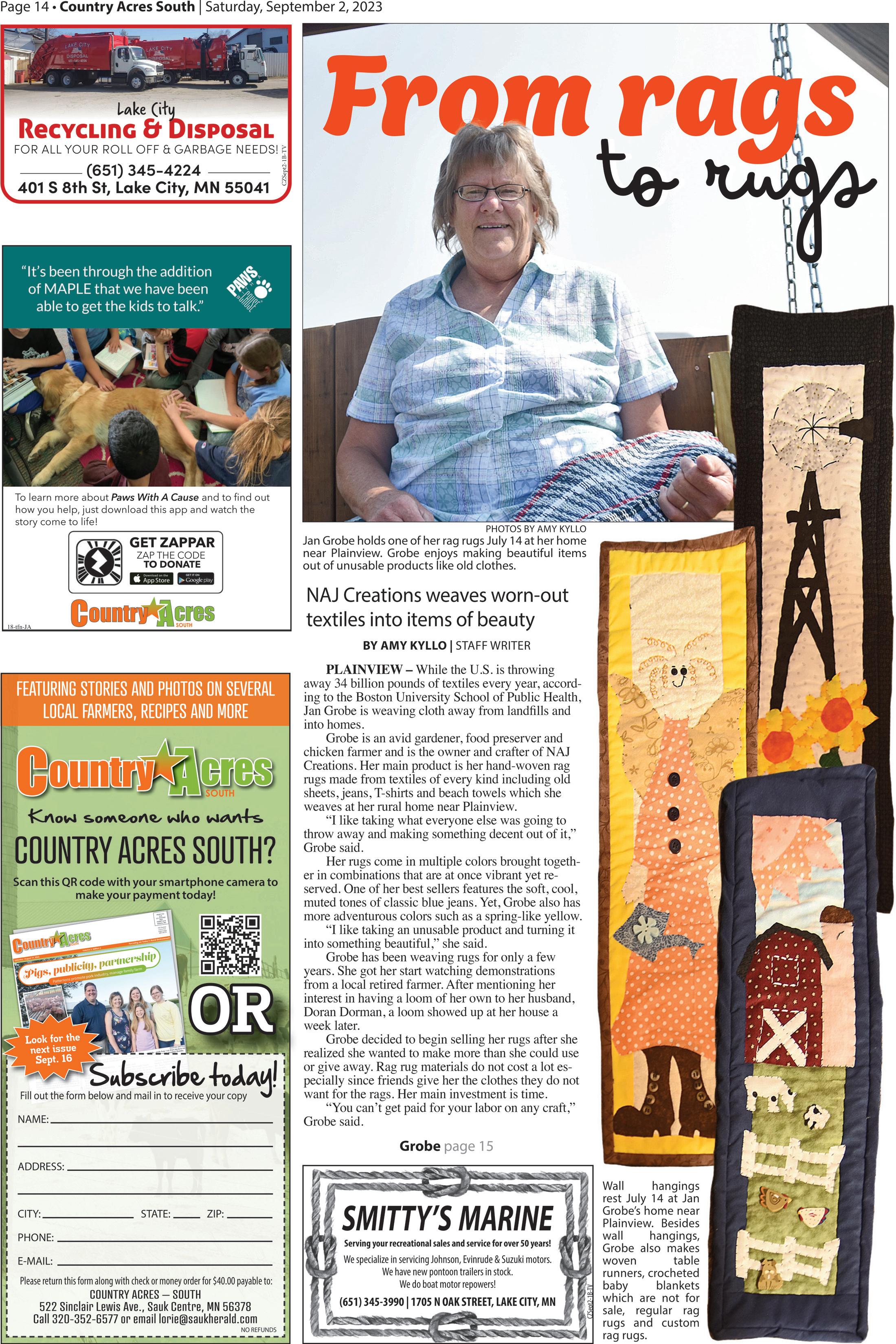
Grobe sorts donated textiles by color and washes them to get rid of any staleness from storage. Then she cuts them into strips, taking care not to include any seams in her strips because they will cause bumps. The width of the strip depends on the fabric. Jean strips are one-fourth of an inch while T-shirts and sheets are three-fourths of an inch.
Once the material is cut into strips, she sews them together end to end on her sewing machine and winds them into balls. These balls are then woven on the loom.

Grobe makes multiple products besides her classic rugs. Last year, she made nearly 300 woven table runners. She also makes quilted wall hangings with appliqued designs pressed then hand stitched on.

Grobe also personally designs and crochets baby blankets. She does not sell them, however, because the more expensive materials combined with the labor makes them too costly to sell.


Grobe sells at farmer markets, including the market in Plainview, and at craft sales and Young Love and Floral Finds of Plainview.




Her rugs are machine washable and will not shrink because the material used has already been washed many times.

One of Grobe’s first projects was a collection of memory rugs made from her late parents’ clothes. Besides her own parents, she has also done this for clients. She enjoys projects like the memory rugs as long as clients give her creative license to match the colors and create the combinations that look best.
Grobe even made memory rugs out of old beach towels after a client moved to a home without a pool. Grobe said the rugs turned out bright and fun.
She also does custom orders on regular rugs for those trying to fit a rug to a specific place.

Grobe extends her love of reusing materials into the rest of her life. She calls herself a homesteader because between she and her husband, they are able to grow and make much of what they need.



“We don’t buy a lot,” she said.
Grobe raises almost all of her own fruits and vegetables. The vegetables are grown in raised beds with low weed pressure and are fertilized with chicken manure in the fall. For fruit, she is working




to raise grapes, apples, blueberries, honeyberries, raspberries, cherries, pears, peaches, jostaberries and aronia berries.




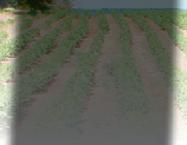





Her gardening started as both a hobby and a requisite.



“I have four boys, so I couldn’t afford to feed them if I didn’t raise the stuff,” Grobe said.





Grobe’s pantry includes jars of canned goods to preserve her stores. She even makes her own juices including a vegetable/tomato juice blend, crab apple juice, orange apple juice and rhubarb juice.
She also raises chickens for meat and eggs. Right now, she has around 500 birds. She sells the extra eggs at the Plainview farmers market and to a list of customers. This year, she raised about 10 breeds of layer chickens because she enjoys seeing the different colors.
Her husband raises

beef cattle, and every few years, the couple finishes pigs for pork.
When it comes to her rugs, Grobe wants to keep the work to a hobby level. She does not want to sell them online because she is afraid all her time would be spent trying to keep up with orders.
“I don’t want it to be a full-time business because that takes the fun out,” she said.

FIELD TRACKER, 800/65R32 RUBBER, BIN EXT, LONG AUGER, ROCK TRAP
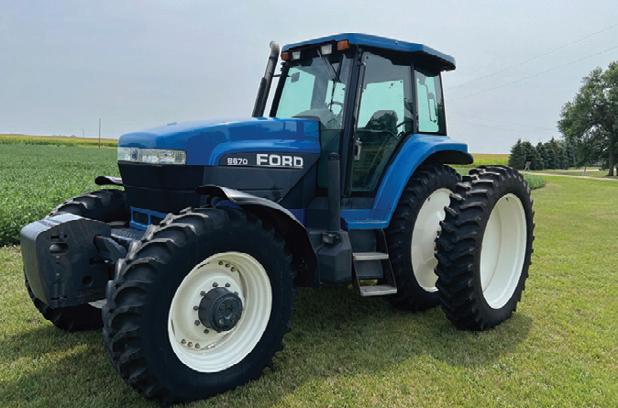

• (I-7) 2013 GERINGHOFF ROTO DISK ELITE XL, 6 ROW

30”, SN110130036330,






• (I-8) CIH 1020 20FT FLEX HEAD, SN338776, 3’ CUT, 2PTO DRIVES,
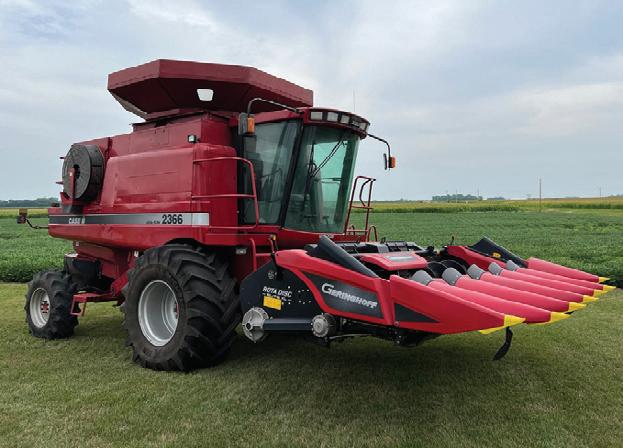
• (I-9) HOMEMADE HEAD MOVER ON RUNNING GEAR
• CIH BEAN HEAD, UNKNOWN CONDITION
• NEW IDEA 2 ROW CORN PICKER, UNKNOWN CONDITION
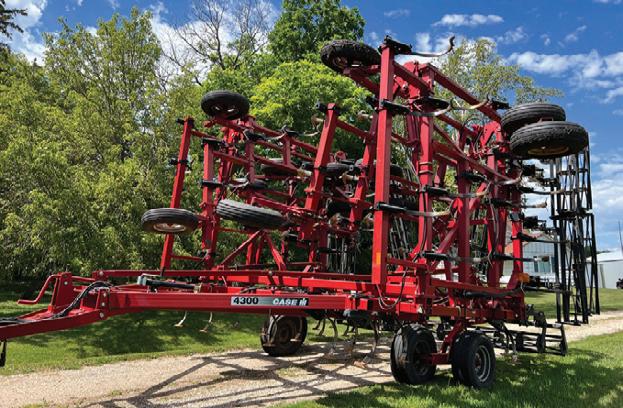
Grain Dryer & Augers

• (I-10) SUPER B SQ12 GRAIN DRYER, SNDC121090953, 1858 HRS, AUTO CONTINUOUS FLOW 245 BU, ENERGY MISER
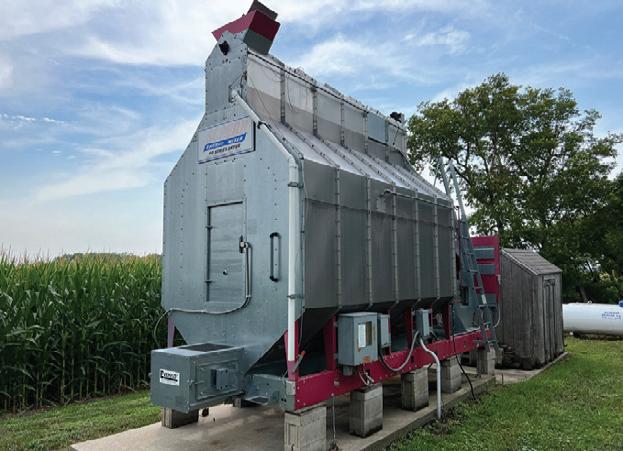
• (I-11) WESTFIELD 8’X 41’ AUGER WITH 7.5 HP ELECTRIC
• (I-12) WESTFIELD WR 6’ X 61’ WITH 5 HP ELECTRIC

• (I-13) WESTFIELD MK 10’ X61’ SWING HOPPER AUGER
Tillage Equipment





• CIH 4300 FIELD CULTIVATOR, 44’ WITH HD HARROW AND ROLLING BASKETS, MANUAL DEPTH CONTROL,
FRT. GAUGE WHEELS, OSCILLATING TANDEMS, SN# 0623585
• DMI ECOLO TIGER 730B, 7 SHANK, WITH REAR COVERING DISKS, SN# 823398

• JD 27 STOCK CHOPPER, 6 ROW 30”, 1000 PTO
• 7 SECTIONS DRAG W/CART, NEEDS TIRES
• MOUNTED 5 BOTTOM AUTO RESET PLOW, UNKNOWN CONDITION
• MASSY FERGUSON DISC, UNKNOWN CONDITION
• IH 6 BOTTOM AUTO RESET MOUNTED PLOW, HYD LIFT Trucks
• (I-16) (TITLE) 1984 IH S2300 DIESEL TWINSCREW WITH 3RD AXLE, CUMMINS WITH 10 SPD, 315/80R22.5 TIRES, 20’ STEEL BOX AND HOIST, ROLL TARP, FRT RUBBER ON ALUM, 79,752 MILES SHOWING

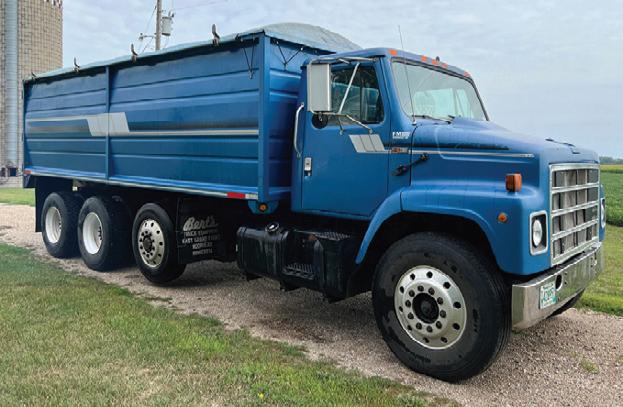
• (I-17) (TITLE) 1976 IH 2050 FLEET STAR TWINSCREW, REMANUFACTURED 3208 CAT DIESEL, ALLISON AUTO-
MATIC, 18’ STEEL BOX AND HOIST, ROLL TARP, 46,009 MILES SHOWING
• (I-18) 1960’S CHEVROLET C60 SINGLE AX TRUCK, V-8, 5 AND 2 TRAN, 16’ BOX AND TRUCK, DAMAGED ROOF AND WINDOW, UNKNOWN CONDITION CHEVY C-50 GRAIN TRUCK, UNKNOWN CONDITION
Planters
• (I-19) JD 1760 12 ROW 30” MAXI EMERGE PLUS CONSERVATION VACUMETER PLANTER, ROW CLEANERS, 2-BU BOXES, HYD FRT FOLD, MONITOR INCLUDED, MARKERS, SN# A01760R690295
• (I-20) JD 7000 18 ROW 22” BEAN PLANTER, HYD FRT FOLD, 3 BU BOXES, REAR LIFT ASSIST, 2PT, MARKERS
• JOHN DEERE 7000, 12 ROW PLANTER, MOUNTED, MARKERS, UNKNOWN CONDITION MISCELLANEOUS OTHER FARM AND LIVESTOCK EQUIPMENT

